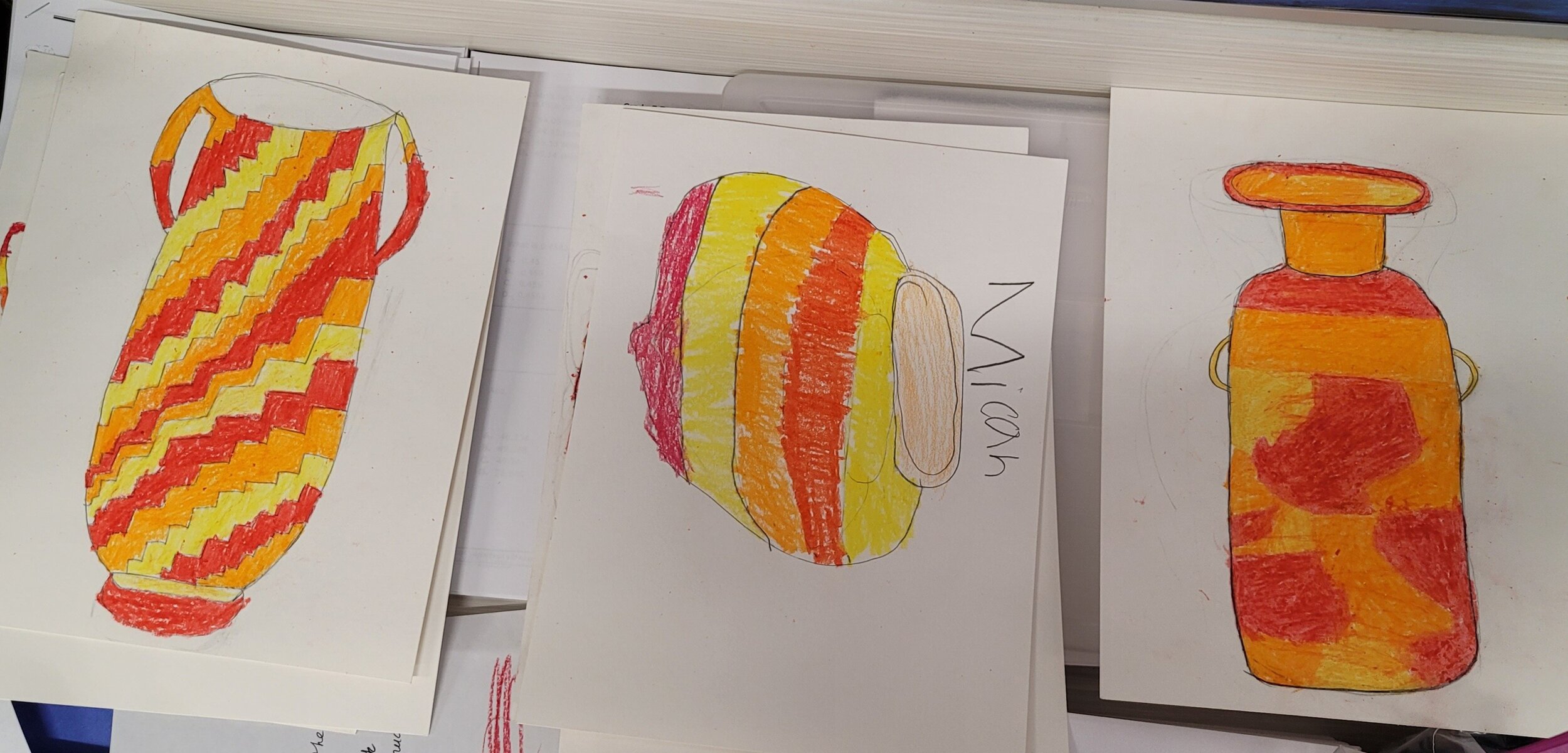Age or Grade Level: 4th Grade
VISUAL ARTS CONTENT / STANDARDS
Code: 4.1.1.5.1
Grade: 4th Grade
Strand: Artistic Foundations
Substrand: 1. Describe the characteristics of the elements of visual art including color, line, shape, value, form, texture, and space.
Standard: 1. Demonstrate knowledge of the foundations of the arts area.
CURRICULAR LINK / STANDARDS, IF APPLICABLE
English
Code: 4.1.4.4
Grade: 4th Grade
Strand: Reading
Substrand: Craft and Structure
Standard: Determine the meaning of words and phrases as they are used in a text, including those that allude to significant characters found in mythology (e.g., Herculean). (Allegories, Fables)
OVERVIEW OF PROJECT
Create an ancient greek vase using the imagery from Greek mythology Gods and Goddesses. Connect the images to everyday life and themselves. (Midas Tire, Nike, Apollo Theater, ect)
“BIG IDEAS”/ ESSENTIAL QUESTION(S)
The big idea for this lesson is to connect ancient greek mythology to everyday life.
What do these symbols mean and why did you choose them?
STUDENT OUTCOME OBJECTIVES
Students will:
Create a scratch off vase.
Illustrate an image from a Greek allegory/fable relating to everyday life.
PRIOR KNOWLEDGE
The students should have prior knowledge of Greek Mythology, of Greek Allegories, and allusions.
TEAM LESSON PREPARATION TIMELINE
Create draft lesson plan 03/17
Teach drafting part of lesson 03/17
Teach lesson on 03/22
EXAMPLES OF ARTWORK
I will show examples of ancient Greece vases to inspire the students. I will also create an example for the students and create with them.
ADDITIONAL RESOURCES
Greek mythology books, powerpoint about greek allusions
ASSESSMENT
See http://artsedge.kennedy-center.org/educators/how-to/supporting-individual-needs/do-tell-giving-feedback.aspx for a varied list of assessment techniques in the arts.
I will grade these based on how they connect greek mythology symbols to their own personalities, also how they use line, patterns, and shape according to the elements of art.
MATERIALS
Paper
Kabob Sticks
Paint
Paint Brushes
Soap
Little cups
Orange and Red Crayons
Pencil
LEARNING ACTIVITIES AND TIMING
Day 1:
Create a draft drawing of the vase based on the images on the slide show (slide 3). Just a simple outline of the vases. (15min)
Show Slideshow, slide 2. About the background of ancient greek vases. (3min)
Go over the project and have the students figure out some images to etch into their vases. Slides 4 and 6 (10min)
Day 2 (could combine with day 1):
Gather Supplies for the project (5min)
Show slides 3 for examples of vase shapes. Have the students draw their vase on their piece of paper, color in. (20min)
Paint over with black paint. Let dry. (5min)
Day 3:
Show slides 4 and 6 with examples. Have the students draw on scratch paper with their ideas. (10min)
Start etching patterns into the vase. Talk about the elements and principles of art specifically pattern, line, and shape. Slide 5 (5min)
Etch the image onto the vase of the greek allegory they chose. (10min)
Done :) write names on papers.





